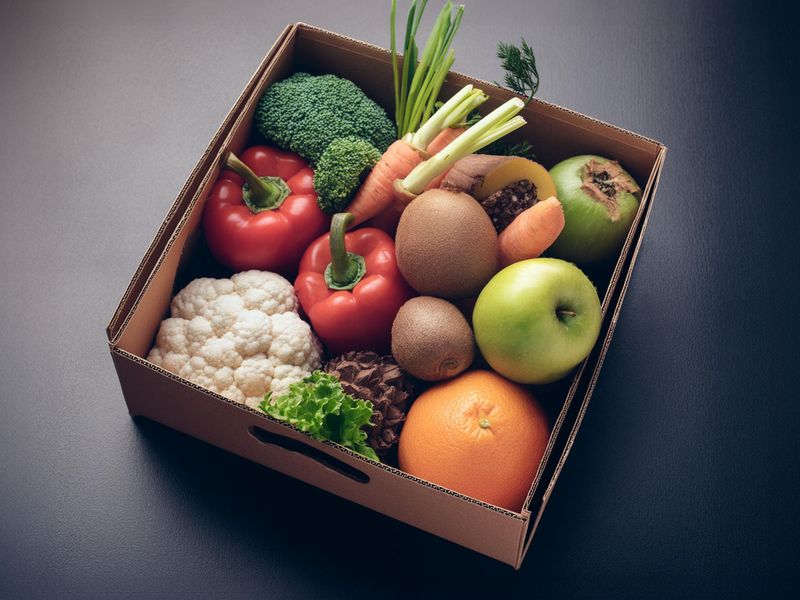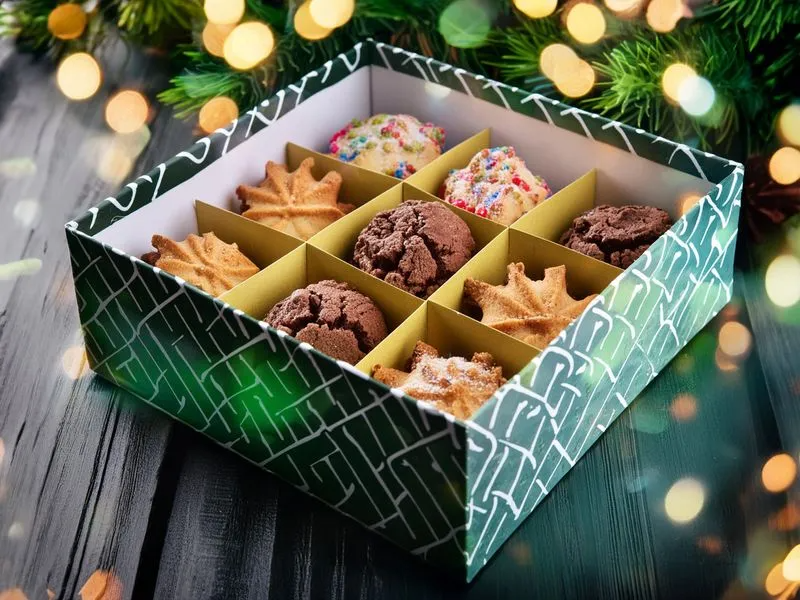Learn everything there is to know about shipping different types of food without compromising the quality.
The logistics of shipping products to customers remains one of the biggest challenges of starting a food business. Some even consider it a deterrent. There are just so many factors to consider — with spoilage being a major hurdle.
However, you won’t encounter shipping issues if you know how to prepare food products for transport. And that’s what this post is all about.
Today, you’ll learn everything there is to know about shipping different types of food without compromising quality.
How to Ship Food Products


Caviar Boxes and Labels by Golden Reserve Caviar
The food packaging materials you use will depend on what sort of product you’re going to ship. Below is a breakdown of different types of food products and how to prepare them for transport.
Non-Perishable Food
The easiest food products to send are shelf-stable items that don’t require temperature control. But that doesn’t mean you can afford to be lax when packing.
Make sure your products don’t get exposed to excessively high or low temperatures. Also, expedited shipping is still recommended in this case.
You can ship non-perishable items in cardboard boxes without needing to add gel packs or other refrigeration solutions.
Refrigerated Food
With refrigerated food, you want to seal food inside plastic bags. You’ll want to line your shipping box insulation and gel packs to keep the temperature low but not freezing. Using overnight shipping is recommended.
If shipping will take longer, you may need to consider switching from gel packs to dry ice.
Make sure that your courier knows that the items inside your box are perishable. Clearly label the box just to make sure.
Frozen Food
Frozen food might be the most complicated type to ship because of the requirements. In this case, you’ll have to use dry ice instead of gel packs to keep products below a specific temperature.
You should vacuum-seal food in plastic bags to maintain their freshness. Your shipping box must indicate that it contains perishable goods. Include a warning that there’s dry ice inside for the safety of everyone who will handle your package.
Cooked Food
Cooked food—including smoked and cured products—should still be treated like perishable items. That means you should still keep them cold during shipping.
If you’re in the food subscription business, stack your food containers in a way that couriers can handle them in any direction. This is only a precautionary measure though. You need to indicate in the box which way is up.
Pack your boxes tight so items won’t move around and potentially leak during transport.
Food Packaging Materials for Shipping


Protein Bar Boxes by Acorn Bar
These are the most commonly used shipping materials and accessories that food businesses use to fulfill orders.
Mailer Boxes
Mailer boxes are stylish containers that you can use for food products like donuts, cookies, jerky, candy, dried fruits, granola bars, cupcakes, pasta, and coffee just to name a few.
These are better for non-perishable or cooked food products. Because they’re small, you might not be able to fit gel packs or dry ice. You’ll also have a harder time adding insulation material inside the box.
By the way, you can use mailer boxes if you’re in the food subscription business.
Shipping Boxes
Shipping boxes are the standard packaging in this business category. Not only can you print your design on these boxes, but you can also specify their size depending on the supplier.
You need that level of customization for food packaging. Keep in mind that you’re not just packing products. You have to consider how much room insulation and dry ice would take up. A standard box might not leave you with enough room to work with.
This type of packaging is popular with meal prep business owners too.
Poly Mailers
Send shelf-stable, pre-packaged food products using poly mailers. This is especially good for food products that are inside durable packaging.
For example:
Products that come inside pouches like gummy bears don’t need to get shipped in boxes — especially if you only receive individual orders. Not only are poly mailers enough in this case, but they’ll save you money on shipping costs.
Labels
Labels can serve many purposes. Businesses mainly use them to seal boxes and add branding elements. However, some use them as jar or honey labels.
Others use them as nutrition labels to help customers make informed purchasing decisions.
Your labels can set you apart from your competitors. So you should take all the time you need to come up with unique and creative labels for your food business.
Packaging Tape
Packaging tape is the best material to use to seal shipping and mailer boxes. You can customize them to show your branding as well.
Custom packaging tape can deter people from tampering with your shipping boxes. Why? Because it’ll make it harder for them to reseal boxes without leaving signs of theft — not unless they have access to your branded tape.
It also makes your food business feel more prestigious. After all, not every business will use branded tape in their packaging.
Food Shipping: Things to Consider


Bakery Care Cards by Julie Thomas Bakery
These are just some of the things you should remember as you prepare to ship food to your customers.
Add Absorbent Padding in Boxes
No matter how carefully you pack your products, sometimes they’ll leak along the way. Unfortunately, this is one of those things that no food business owner can avoid.
But there are things you can do to minimize the damage. Adding absorbent padding on the bottom and top of boxes is one of them. This would prevent any liquid from damaging the box itself.
You should also consider double-bagging your products and lining the sides of the box with a plastic liner.
Order the Correct Shipping Box Size
You don’t want products to move at all while inside the box. This reduces the chances of products getting damaged or exposed to the elements.
Before looking for a food packaging supplier, lay out your products on a table and try to get an estimate of how big your box should be. Don’t forget to take gel packs or dry ice into consideration.
Next, find a box supplier that offers custom box sizes and enter the exact box dimensions you need. This way, you’ll know that your products will fit snugly inside your shipping boxes as they make their way to customers.
Use Box Fillers
Again, this goes back to the earlier point of trying to eliminate movement inside the box during transport.
If you can’t get boxes in the exact size you need, you can use box fillers to remove any gaps inside the packaging. This should prevent products from sliding side to side.
There are different types of box fillers in the market. What you should get will depend on what type of product you’re selling. Just make sure that you only get food-safe options. If you’re unsure, ask the supplier.
Find the Fastest Courier
You want to get your products into the hands of your customers as quickly as possible. To do that, you’ll need to work with a fast and reliable courier.
Do your research and see what options you have available in your area. Most businesses use FedEx, UPS, DHL, and USPS. If you can find a courier that offers same-day or next-day delivery, that would be perfect.
Keep in mind, however, that these couriers have different pricing. That’s something you’ll have to take into account especially if you’re going to be the one to shoulder the shipping costs.
Track Your Shipment
When looking for a courier, find one that offers tracking features. This will give you and your customers peace of mind. Both of you will be able to see where your boxes are any time you want.
Some couriers will even let you track multiple shipments at once. You’ll have to compare couriers to see which ones will work best with your setup.
Recap
There are different types of food products you can ship: non-perishable, refrigerated, frozen, and cooked. What type of packaging to use will depend on the type of food you’re shipping.
For non-perishable goods, you can stick to regular packaging. You can even ship them in poly mailers to save costs. These don’t normally require any refrigeration so there’s no need to add gel packs or dry ice.
That’s not the case for refrigerated and frozen foods. If you’re sending refrigerated goods, use gel packs. That’s unless your products will take days to arrive, in which case you’ll need to pack them with dry ice.
You’ll have to ship frozen products with dry ice.
Lining your shipping boxes with plastic is a good idea. Consider double-bagging your products to prevent leakage. Add absorbent padding inside your packaging to prevent boxes from getting damaged on their way to customers.
PackM offers customizable food packaging materials that are suited for startups and small businesses. Give us a call or chat with one of our representatives if you want more information or have questions about our services.
Related Posts:









